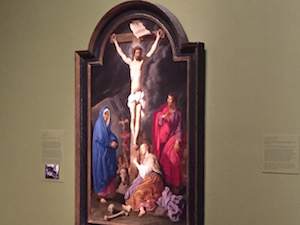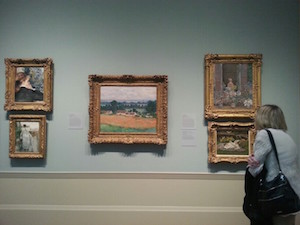 Today the PALETTE Program took a trip to the Visual Arts Center where we divided into different classes to learn about either book making, pottery, letter press or portraits. I had the opportunity to attend the book making class. Unfortunately my PAL was unable to attend class today. However, since we were in a small class I was able to interact with some of the other PALs in the book making class which gave me the opportunity to meet new people and learn about them through the books we created. It was interesting to hear why people selected the clippings and colors they used for their book and how it pertained to their life and current feelings they had. I felt that by creating the art with them I was able to learn more about them on a deeper level that I wouldn’t have gotten to by just talking with them. We were able to laugh and help each other out with our books as a class. I enjoyed everyone sharing their creations. It is hard for me to believe that the program is almost over for the semester! I have thoroughly enjoyed having the opportunity to meet new people of different generations and learn about the many different art techniques there are. It has been such an enlightening and enjoyable experience for me.
Today the PALETTE Program took a trip to the Visual Arts Center where we divided into different classes to learn about either book making, pottery, letter press or portraits. I had the opportunity to attend the book making class. Unfortunately my PAL was unable to attend class today. However, since we were in a small class I was able to interact with some of the other PALs in the book making class which gave me the opportunity to meet new people and learn about them through the books we created. It was interesting to hear why people selected the clippings and colors they used for their book and how it pertained to their life and current feelings they had. I felt that by creating the art with them I was able to learn more about them on a deeper level that I wouldn’t have gotten to by just talking with them. We were able to laugh and help each other out with our books as a class. I enjoyed everyone sharing their creations. It is hard for me to believe that the program is almost over for the semester! I have thoroughly enjoyed having the opportunity to meet new people of different generations and learn about the many different art techniques there are. It has been such an enlightening and enjoyable experience for me.
Emily Johnson, graduate student in Dental Hygiene.

 Today, we had a cultural outing at the VMFA. We were split up into two groups, those who have been there before and those who have not been. My PAL, Shirley and I have both been to VMFA, so we went with the group that would get a more in-depth view of artistic style over the centuries. It was fascinating because the concept of art is organic, it continues to change over time; however, the concept of ageism is still present in art. Even the tour guide said that those who are older do not appreciate modern day or 20th century art because it isn’t “real.” It is interesting how ageist stereotypes even exist in art.
Today, we had a cultural outing at the VMFA. We were split up into two groups, those who have been there before and those who have not been. My PAL, Shirley and I have both been to VMFA, so we went with the group that would get a more in-depth view of artistic style over the centuries. It was fascinating because the concept of art is organic, it continues to change over time; however, the concept of ageism is still present in art. Even the tour guide said that those who are older do not appreciate modern day or 20th century art because it isn’t “real.” It is interesting how ageist stereotypes even exist in art.
